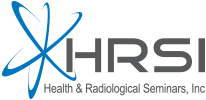This 80-Hour Nuclear Cardiology License Preparation Course satisfies the NRC requirement for 80 hours of classroom and laboratory training in basic radionuclide handling techniques and safety for authorized users. This course fulfills CBNC certification exam requirements for classroom and laboratory training.
Part I – Radiation Essentials for Nuclear Medicine
This section provides an introduction and review of essential radiation principles, including reviews of radioactive decay, equilibrium, and doses. Furthermore, a comprehensive look into the production of imaging isotopes for cardiology is included. In addition to background information, it covers details relevant to radiation dosage and radiation safety in the workplace, the effects of radiation, and internal dosimetry. Case studies examining high radiation doses are examined, and the principles of radiobiology are introduced. Lastly, radiation induced teratogenesis is presented and explained.
View Section Modules
Module 102 – Background Radiation
Module 103 – Production of Imaging Isotopes for Cardiology
Module 104 – Radioactive Decay
Module 105 – Equilibrium, Special Activity and Radiation ‘Dose’
Module 106 – Radiation Dose from External Sources
Module 107 – Shielding and Minimizing Radiation Doses to Workers
Module 108 – Internal Dosimetry
Module 109 – Acute Effects of Ionizing Radiation
Module 110 – Acute High Radiation Doses: Case Studies
Module 111 – Radiobiology
Module 112 – Radiation Induced Teratogenesis
Part II – Introduction to Nuclear Pharmacy
This section begins with introductions to radiopharmaceutical chemistry and nuclear medicine, before exploring the production of radiopharmaceuticals and radionuclide generators. It includes a highly useful look at nuclear medicine math. Quality control in the field of radiopharmacy is then examined, with extensive coverage of radiopharmaceuticals, and the relevant regulations and radiation protection. Finally, PET techniques are covered, and a review of radiobiology is provided.
View Section Modules
Module 202 – Introduction to Nuclear Medicine
Module 203 – Production of Radiopharmaceuticals
Module 204 – Radionuclide Generators
Module 205 – Nuclear Medicine Math
Module 206 – Radiopharmacy Quality Control
Module 207 – Regulations and Radiation Protection
Module 208 – Radiopharmaceuticals
Module 209 – Positron Emission Tomography
Module 210 – Radiobiology Review
Module 211 – Radiopharmaceuticals and Nuclear Cardiology Studies
Part III – Nuclear Imaging and Counting Instrumentation
This section begins with an overview of the principles of radiation detection and measurement, before examining the use of ionization and scintillation detectors for this purpose. Radionuclide imaging techniques are introduced, after which a detailed review of imaging technology is covered, including a detailed look at gamma cameras, SPECT, PET, CT, and multi-modality devices. Lastly, the concept of pharmacokinetic analysis of radiopharmaceuticals is explained.
View Section Modules
Module 302 – Ionization Detectors: Principles and Applications
Module 303 – Scintillation Detectors: Principles and Applications
Module 304 – Radionuclide Imaging Techniques
Module 305 – Gamma Cameras: Design and Operating Principles
Module 306 – Gamma Cameras: Performance and Quality Control
Module 307 – Single-Photo Emission Computer Tomography (SPECT)
Module 308 – Positron Emission Tomography (PET)
Module 309 – Computer Tomography (CT)
Module 310 – Multi-Modality Devices: PET-CT, SPECT-CT, and Beyond
Module 311 – Pharmacokinetic Analysis of Radiopharmaceuticals
Part IV – Clinical Aspects of Study Selection
This section examines the clinical aspects of study selection, detailing patient and test selection. It continues to introduce new SPECT technology, and provides highly relevant information about cardiac imaging involving radiation exposure.
View Section Modules
Module 402 – New SPECT Technology
Module 403 – Radiation Exposure from Cardiac Imaging
Part V – Laboratory Training
This section teaches the radiation safety procedures necessary in the laboratory setting.
View Section Modules
Part VI – Gamma Camera and QC
This section expands on previously covered material by extensively covering gamma cameras, including a lab session, and an expanded review of setting up gamma cameras and performing quality control measures on them.
View Section Modules
Module 602 – Gamma Camera Set Up and QC
Register For This Course Now
